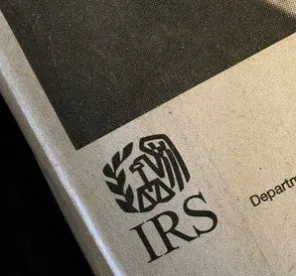On September 13, 2019, the IRS and Treasury Department released final regulations (the Final Regulations) and new proposed regulations (the New Proposed Regulations) that interpret and clarify the regime for immediate expensing (Bonus Depreciation) under the Tax Cuts and Jobs Act (TCJA). The Final Regulations finalize, and the New Proposed Regulations seek to amend, portions of the proposed regulations released on August 3, 2018 (the August Proposed Regulations). The Final Regulations and the New Proposed Regulations have been well-received by the energy and infrastructure industries, particularly insofar as they provide clarity and constructive guidance to taxpayers on important topics for which direction was previously lacking.
Key Provisions in the Final Regulations
Clarification of the Used Property Requirements
The TCJA provides that, in order to claim Bonus Depreciation for used property, the taxpayer must acquire such property in a taxable transaction from an unrelated seller after September 27, 2017, and neither the taxpayer nor a predecessor may have previously used the property. The August Proposed Regulations provide additional detail regarding previous use, stating that property is deemed to be used by a taxpayer if such taxpayer previously owned a depreciable interest in such property. The Final Regulations clarify such requirement in several respects; this guidance has been welcomed by taxpayers in the energy and infrastructure industries, particularly because taxpayers in these industries often find themselves acquiring, and reacquiring, assets during their useful lives.
First, the Final Regulations provide much-need guidance concerning the scope of the term "predecessor," which includes (1) a transferor of an asset in certain tax-free corporate transactions, including a liquidation described under Code Section 332 or a contribution to a controlled corporation pursuant to Code Section 351, (2) a transferor of an asset in certain carryover basis transactions, including a contribution to a partnership under Code Section 721, and (3) a partnership that is treated as a continuing partnership under Code Section 708.
The Final Regulations also provide that, for purposes of determining whether a taxpayer or predecessor previously had a depreciable interest in property, only the five calendar years immediately prior to the taxpayer's current placed-in-service year are considered. Prior to the release of the Final Regulations, several commentators, including the New York State Bar Association, argued that an unlimited look-back period would impose a significant due diligence burden on taxpayers.
Finally, consistent with existing regulations under Code Section 168, the Final Regulations provide that reconditioned or rebuilt property does not satisfy the original use requirement. However, the Final Regulations also provide that, if a taxpayer or predecessor previously had a depreciable interest in a property, and the taxpayer or predecessor later reacquired such property after a renovation, the renovated property will be eligible for Bonus Depreciation if the cost of the used parts is less than, or equal to, twenty percent (20%) of the total cost of such renovated property, whether acquired or self-constructed. Taxpayers in energy and infrastructure have welcomed this clarification, particularly because it features a bright-line rule that is expected to be clear and easily administrable.
Clarification of Acquisition Date for Used Property Acquired by Contract
The TCJA provides that, to be eligible for Bonus Depreciation, property must be acquired by the taxpayer after September 27, 2017, or acquired by the taxpayer pursuant to a written binding contract entered into after September 27, 2017. Commentators and practitioners, however, questioned the application of this rule to a written contract that may not become binding until after its execution date. In response, the Final Regulations provide that the acquisition date of property acquired pursuant to a written contract is the latest of the date (1) on which the contract is entered into, (2) on which the contract is enforceable under state law, (3) on which all cancellation periods end, if the contract has one or more cancellation periods, and (4) on which all conditions subject to contingency clauses are satisfied, if the contract has one or more contingency clauses. As a result, taxpayers should be able to determine the acquisition date of property acquired pursuant to a written contract with greater certainty, which will be particularly relevant for determining whether qualified property is properly treated as acquired after 2022 and therefore subject to the phase out of Bonus Depreciation.
The Final Regulations also clarify that property constructed for the taxpayer by another person under a written binding contract is treated as self-constructed property for purposes of Bonus Depreciation. Accordingly, the acquisition date for such property is not determined by the rule for written binding contracts, described above. Instead, the acquisition date will be determined based on the rules for self-constructed property, which provides that such property generally will not be treated as acquired until more than ten percent (10%) of the total cost of construction is incurred. Taxpayers in energy and infrastructure have welcomed this guidance, particularly because it expanded the category of properties that are subject to the ten percent (10%) safe harbor.
Partnership Rules under the Final Regulations
The Final Regulations address several unanswered questions regarding the application of the August Proposed Regulations to partnerships. First, the Final Regulations do not permit an upper-tier partnership to elect out of Bonus Deprecation on behalf of a lower-tier partnership in which it owns an interest. Master limited partnerships (MLPs) owning energy and infrastructure assets advocated that the Final Regulations permit upper-tier partnerships to make such an election. If an MLP holds an interest in a lower-tier partnership, and a transfer of the MLP's units gives rise to a Code Section 743(b) adjustment in the hands of an acquiring unitholder, but with an election out of Bonus Depreciation, the MLP's units are unlikely to remain fungible unless the lower-tier partnership also elects out of Bonus Depreciation with respect to the MLP's Code Section 743(b) adjustment. Since the Final Regulations were issued, MLPs and their advisors often negotiate for the contractual right to compel lower-tier partnerships to elect out of Bonus Depreciation in this circumstance, which is substantively similar to the election that MLPs sought to include in the Final Regulations.
The Final Regulations also confirm that Bonus Depreciation is not available for basis adjustments under Code Sections 732 and 734 and, despite recommendations to the contrary, including from the New York State Bar Association, remedial allocations under Code Section 704(c). Taxpayers should be pleased that the Final Regulations permit Bonus Depreciation for a Code Section 743(b) adjustment that is attributable to a remedial layer in a privately-held partnership.1 Accordingly, buyers of non-public partnership interests may claim Bonus Depreciation on Code Section 743(b) adjustments, regardless of whether the target partnership has chosen the remedial method for the partnership’s Code Section 704(c) property. Despite this opportunity for Bonus Depreciation, however, buyers should consider the partnership-level complexity and compliance burden of recovering a book-tax difference using the remedial method while, at the same time, permitting a partner to recover a Code Section 743(b) adjustment under a different convention.
Finally, the Final Regulations provide guidance with respect to Revenue Ruling 99-5 (Situation 1) transactions (Situation 1 Transactions). If a taxpayer acquires an interest in a disregarded entity holding qualified property in a Situation 1 Transaction, and therefore is deemed to acquire a direct interest in the property and contribute such interest to a newly-formed partnership, the Final Regulations clarify that the taxpayer-buyer is eligible to take Bonus Depreciation with respect such interest. In this case, the taxpayer would be required to claim the Bonus Depreciation outside of the partnership and, immediately after, contribute such interest to the newly-formed partnership with zero tax basis (creating a Code Section 704(c) asset). Commentators and practitioners generally view the foregoing as the correct treatment of Situation 1 Transactions, but agreed that the drafting of the August Proposed Regulations was not sufficiently clear to ensure this result. Without clarification in the Final Regulations, the August Proposed Regulations could be read to require such Bonus Depreciation to be taken at the partnership level, which potentially could have required such a taxpayer-buyer to share the Bonus Depreciation created by its purchase with the other partners in the partnership.
Key Provisions in the New Proposed Regulations
The New Proposed Regulations propose useful guidance concerning regulated public utility property, which is not eligible for Bonus Depreciation under the TCJA. As a clarification to this general rule, the New Proposed Regulations provide a test for determining whether qualified property should be treated as regulated public utility property and therefore ineligible for Bonus Depreciation. This test seeks to classify property based on its primary use by the taxpayer and is intended to mirror the existing primary use test under the Code Section 167 regulations. Taxpayers operating regulated public utility businesses alongside unregulated businesses have appreciated the adoption of a familiar standard for classifying regulated and unregulated public utility property, which taxpayers should be able to apply without significant burden or compliance cost.
The New Proposed Regulations also propose new rules concerning the acquisition of used property. First, for purposes of testing relatedness in a series of related transactions, the New Proposed Regulations require that relatedness be tested immediately after each transaction in the series, and between the original transferor and the ultimate transferee immediately after the final transaction in the series. The New Proposed Regulations also provide that, for purposes of determining when a taxpayer previously had a depreciable interest in tangible property, prior use by the taxpayer of 90 days or less is ignored. Finally, as a further clarification to the rules applicable to partnerships, a partner will be treated as having a depreciable interest in property held by a partnership equal to such partner's share of depreciation deductions with respect to such property as a percentage of the total amount of depreciation deductions with respect to such property, in each case during the current and prior five taxable years.
Looking Ahead
The Final Regulations are effective for qualified property placed in service during taxable years that include the date they are published in the Federal Register. Taxpayers may elect to apply the Final Regulations to qualified property acquired and placed in service after September 27, 2017, by the taxpayer during the taxpayer's taxable year ending on or after September 28, 2017, and provided that the taxpayer consistently applies all the rules in the Final Regulations.
The New Proposed Regulations apply to qualified property placed in service during or after the taxpayer's taxable year that includes the date the rules are adopted as final. Pending the issuance of final regulations, a taxpayer may choose to rely on the New Proposed Regulations, in their entirety, for qualified property acquired and placed in service after September 27, 2017, by the taxpayer during the taxpayer’s taxable year ending on or after September 28, 2017.
_________________________________________________________________________
1 Bonus depreciation continues to be prohibited in this circumstance for publicly-traded partnerships.




 />i
/>i
